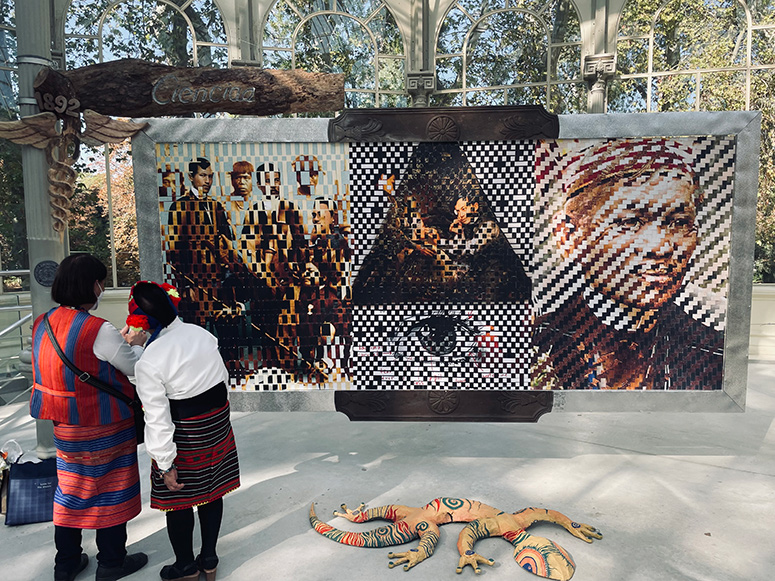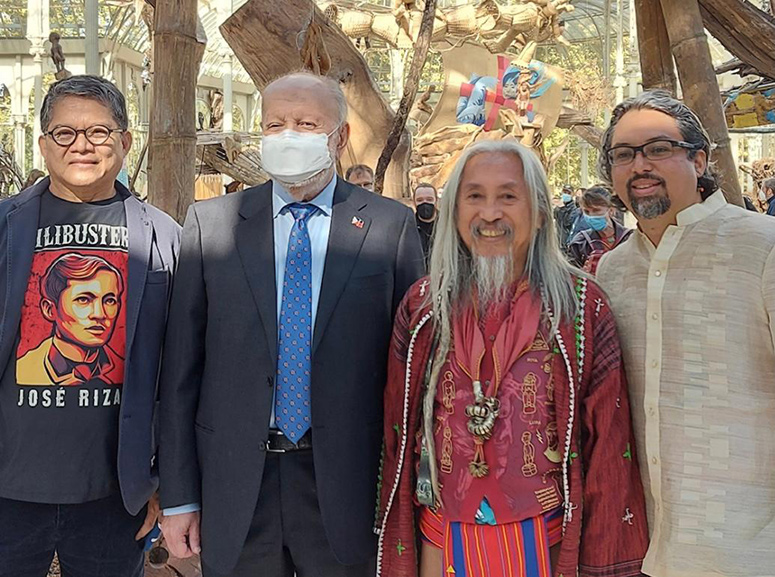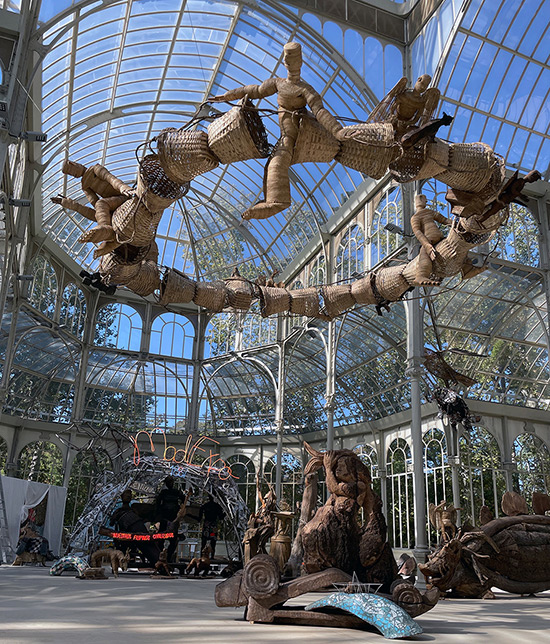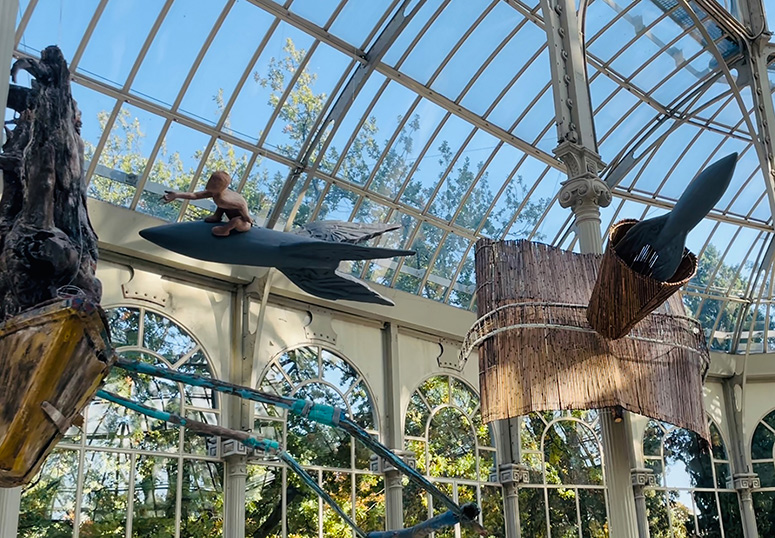Philippine history according to Kidlat Tahimik
MADRID, Spain — For what is officially dubbed “Magellan, Marilyn, Mickey & Fr. Dámaso. 500 Years of Conquistador Rockstars,” Filipino National Artist for Film Kidlat Tahimik rewrites Philippine history from the point of view of a native in a mammoth exhibition at the Palacio de Cristal, Retiro Park, Madrid.
Tahimik underscores the significance of the timing of what he considers his swan song — the quincentennial of the first encounter between España y Filipinas.
“It’s an opportunity to highlight a historical moment in our history as the first resistance of the natives against colonialism. On April 27, 1521, Ferdinand Magellan was slain by the chieftain Lapu-Lapu at Mactan Island,” he wrote in his proposal to the Reina Sofia Museum director Manolo Borja Vilial.

“Can I do justice to this great milestone in my country’s history?” he further asked. “At the same time can this colonized Filipino artist be audacious enough to correct the historic symbolism of your 1521 Spanish military tragedy — which, in the eyes of local culture, was actually our glorious victory?”
Whatever the case, it’s a release for Tahimik: “The exhibition is from the point of view of the colonized islanders to be presented, 500 years later, in the land of the colonizers! Finally!”

Indeed, the first circumnavigation of the world comes full circle, not presenting the point of view of the slain conqueror, but from a proud son of the first native to resist colonialism.
‘Ring 1: 1521’

In “Ring 1: 1521” of the exhibition, the auteur takes artistic license in depicting the initial encounter of the conquistadores and the natives. During the Battle of Mactan, Lapu-Lapu’s wife, Bulakna (left), a woman warrior and arnis expert, strikes the armor-clad Magellan literally below the belt, where the groin is not covered by the armor, giving the fatal blow to the conquistador’s death.
“Here’s the naughty version of history,” he says with a smile: “Magellan was in full armor. But in those days, walang zipper!”
‘Dap-ay in the Sky’

“Dap-ay in the Sky” — a seven-meter-diameter woven ring — hangs above the middle section of the Palacio. It holds together the three main components of the installation, depicting three periods in Philippine history, namely 1521, 1887 and 2021. A dap-ay is a large stone circular seat that served as an outdoor meeting place in the Igorot village.

Kidlat Tahimik explains: “The pagan spirits, depicted with three indigenous gods made of woven rattan, are watching over the natives amusedly.” The gods, according to Tahimik, guide the tribal people with their innate cultural skills to survive the colonial forces that try to homogenize world culture.




